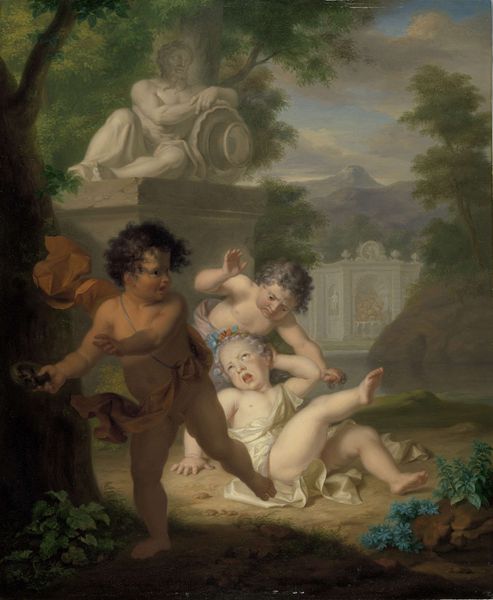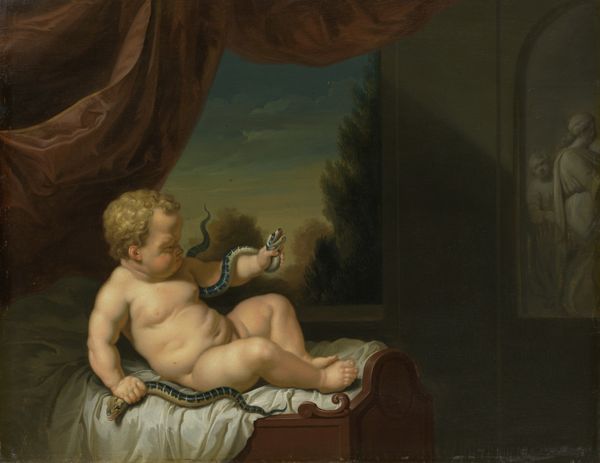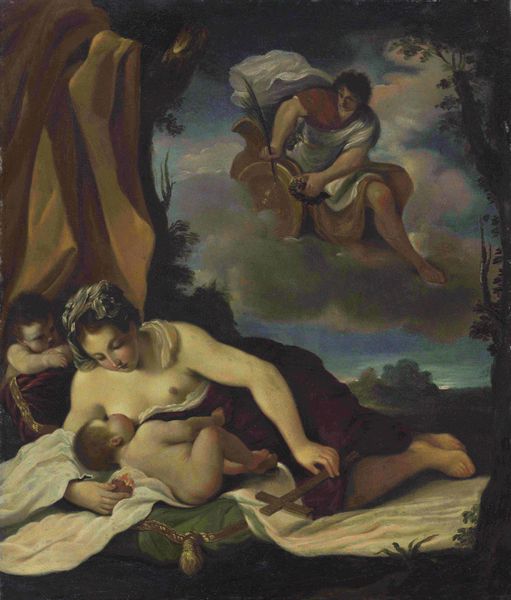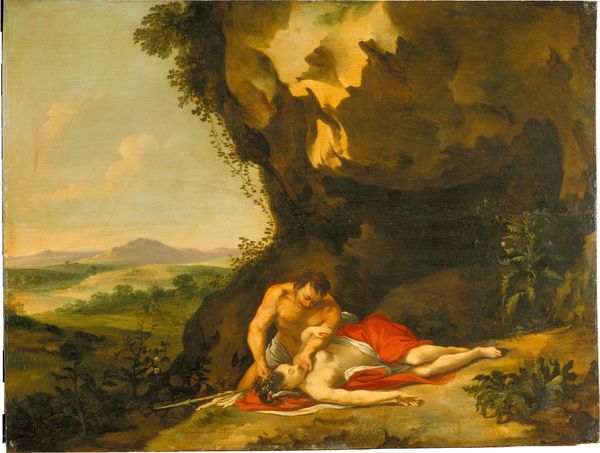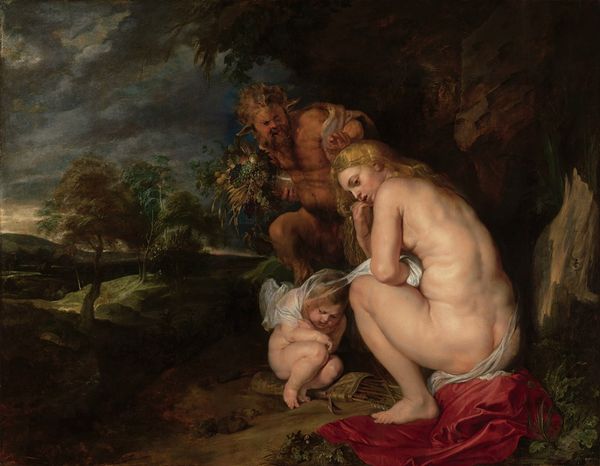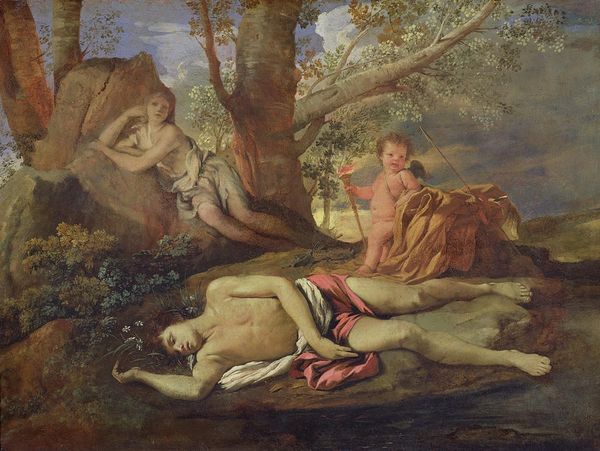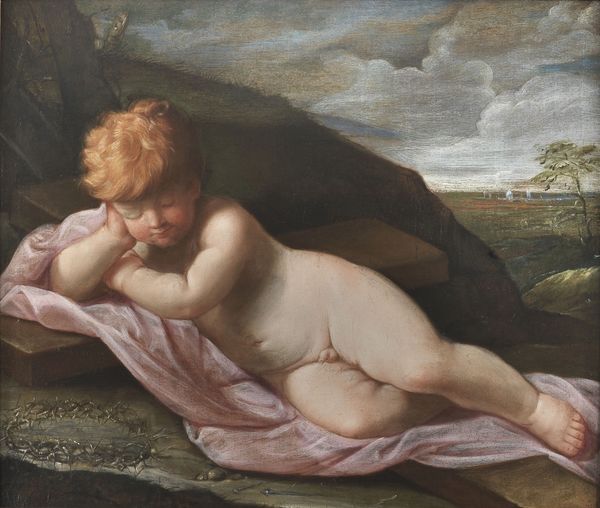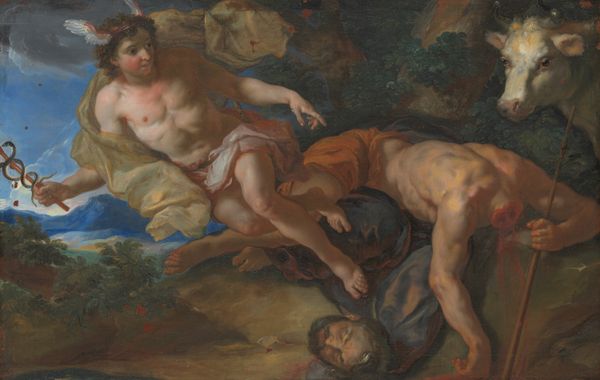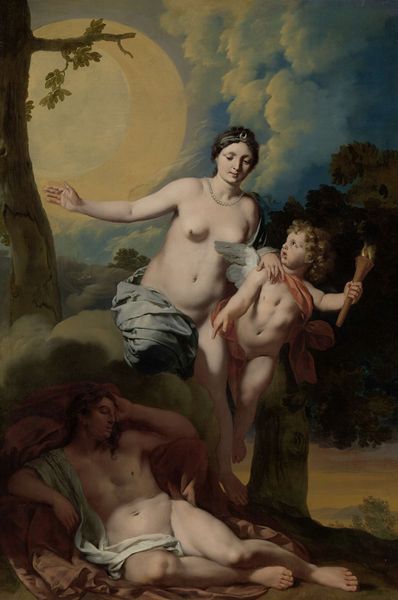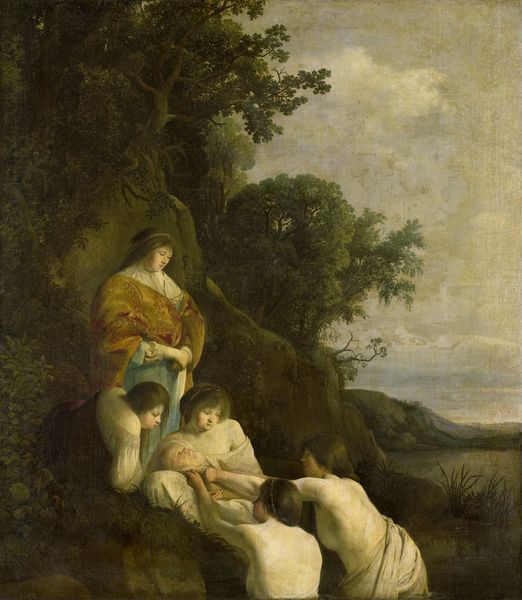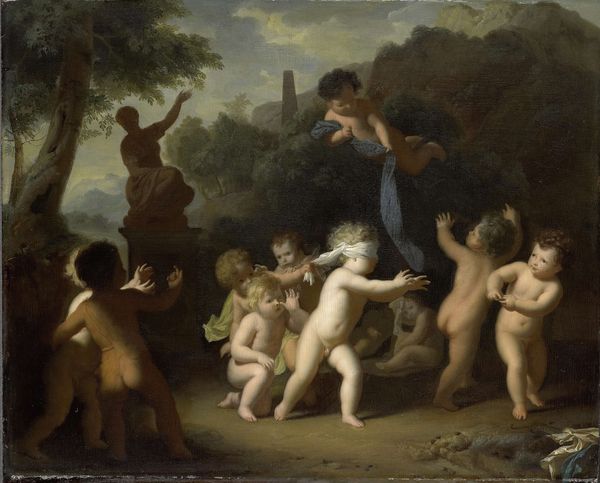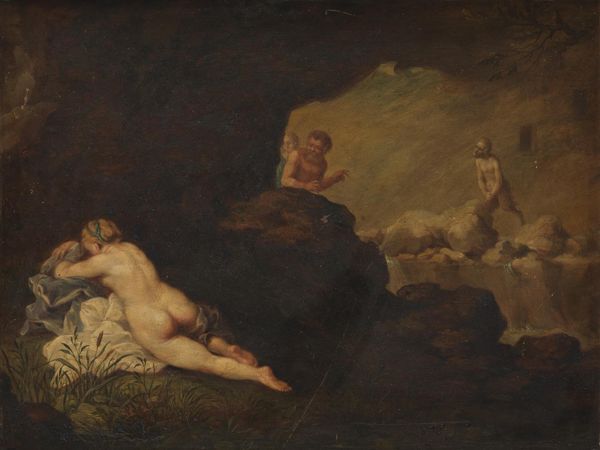
oil-paint
#
allegory
#
baroque
#
oil-paint
#
landscape
#
figuration
#
genre-painting
#
nude
Dimensions: height 34.8 cm, width 43.5 cm, depth 8.5 cm
Copyright: Rijks Museum: Open Domain
Pieter van der Werff's "The Infant Bacchus," probably made in the early 18th century, is rendered in oil paint on a wood panel. The smooth surface of the painting speaks to the artist's command of his medium, a testament to the traditions of European painting. Van der Werff coaxes a range of tonal variations from his materials, especially in the infant's chubby flesh. But it is the laborious process of layering oil paint, building up translucent glazes, that gives the image its particular glow. This painstaking process has imbued the artwork with a sense of preciousness. Van der Werff also seems keen to show off his ability to capture different textures – the roughness of the tree bark, the smoothness of the metal vase, and the soft folds of the fabric. The amount of work involved in the production process elevates painting to the status of a luxury commodity. Paying attention to materials, making, and context helps us understand the full meaning of an artwork. It challenges traditional distinctions between fine art and craft.
Comments
No comments
Be the first to comment and join the conversation on the ultimate creative platform.
